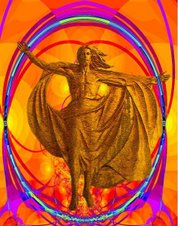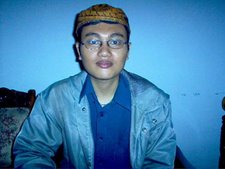Friday, April 27, 2012
Queer theory
From Wikipedia, the free encyclopedia
Jump to: navigation, search
Not to be confused with Queer studies.
This article has multiple issues. Please help improve it or discuss these issues on the talk page.
* It needs additional citations for verification. Tagged since July 2011.
* It may require cleanup to meet Wikipedia's quality standards. Tagged since July 2011.
* It may contain original research. Tagged since July 2011.
Sociology
Social Network Analysis diagram
Outline
Theory · History
Positivism · Antipositivism
Functionalism · Conflict theory
Middle-range · Mathematical
Critical theory · Socialization
Structure and agency
Research methods
Quantitative · Qualitative
Historical · Computational
Ethnographic · Network analytic
Topics · Subfields
Cities · Class · Crime · Culture
Deviance · Demography · Education
Economy · Environment · Family
Gender · Health · Industry · Internet
Knowledge · Law · Medicine
Politics · Mobility · Race and ethnicity
Rationalization · Religion · Science
Secularization · Social networks
Social psychology · Stratification
Browse
Portal
Category tree · Lists
Journals · Sociologists
Article index
* v
* t
* e
Queer theory is a field of post-structuralist critical theory that emerged in the early 1990s out of the fields of queer studies and Women's studies. Queer theory includes both queer readings of texts and the theorisation of 'queerness' itself. Heavily influenced by the work of Eve Kosofsky Sedgwick, Judith Butler, and Lauren Berlant, queer theory builds both upon feminist challenges to the idea that gender is part of the essential self and upon gay/lesbian studies' close examination of the socially constructed nature of sexual acts and identities. Whereas gay/lesbian studies focused its inquiries into "natural" and "unnatural" behaviour with respect to homosexual behaviour, queer theory expands its focus to encompass any kind of sexual activity or identity that falls into normative and deviant categories.
Contents
[hide]
* 1 Queer theory
* 2 Overview
* 3 History
* 4 Background concepts
* 5 Identity politics
* 6 Role of biology
* 7 The HIV/AIDS discourse
* 8 The role of language
* 9 Media and other creative works
* 10 Queer theology
* 11 Criticism
* 12 Post–queer theory
* 13 Future directions: phenomenology and queer theory
* 14 See also
o 14.1 Theorists
* 15 References
* 16 Further reading
* 17 External links
[edit] Queer theory
“ Queer is by definition whatever is at odds with the normal, the legitimate, the dominant. There is nothing in particular to which it necessarily refers. It is an identity without an essence. 'Queer' then, demarcates not a positivity but a positionality vis-à-vis the normative.[1] ”
Queer theorist Michael Warner attempts to provide a definition of a concept that typically circumvents categorical definitions: "Social reflection carried out in such a manner tends to be creative, fragmentary, and defensive, and leaves us perpetually at a disadvantage. And it is easy to be misled by the utopian claims advanced in support of particular tactics. But the range and seriousness of the problems that are continually raised by queer practice indicate how much work remains to be done. Because the logic of the sexual order is so deeply embedded by now in an indescribably wide range of social institutions, and is embedded in the most standard accounts of the world, queer struggles aim not just at toleration or equal status but at challenging those institutions and accounts. The dawning realisation that themes of homophobia and heterosexism may be read in almost any document of our culture means that we are only beginning to have an idea of how widespread those institutions and accounts are.[2]
Queer theory's main project is exploring the contesting of the categorisation of gender and sexuality; identities are not fixed – they cannot be categorised and labeled – because identities consist of many varied components and that to categorise by one characteristic is wrong. Queer theory said that there is an interval between what a subject “does” (role-taking) and what a subject “is” (the self). So despite its title the theory's goal is to destabilise identity categories, which are designed to identify the “sexed subject” and place individuals within a single restrictive sexual orientation.
[edit] Overview
Question book-new.svg This unreferenced section requires citations to ensure verifiability.
Queer theory is derived largely from post-structuralist theory, and deconstruction in particular. Starting in the 1970s, a range of authors brought deconstructionist critical approaches to bear on issues of sexual identity, and especially on the construction of a normative "straight" ideology. Queer theorists challenged the validity and consistency of heteronormative discourse, and focused to a large degree on non-heteronormative sexualities and sexual practices.
The term "queer theory" was introduced in 1990, with Eve Kosofsky Sedgwick, Judith Butler, Adrienne Rich and Diana Fuss (all largely following the work of Michel Foucault) being among its foundational proponents.
[edit] History
Before the phrase “Queer Theory” was born, the term ‘Queer Nation’ appeared on the cover of the short-lived lesbian/gay quarterly Outlook in the winter 1991 issues. Writers Allan Berube and Jeffrey Escoffier drove home the point that Queer Nation strove to embrace paradoxes in its political activism, and that the activism was taking new form and revolving around the issue of identity.[3][dead link] Soon enough Outlook and Queer Nation stopped being published, however, there was a mini-gay renaissance going on during the 1980s and early 1990s. There were a number of significant outbursts of lesbian/gay political/cultural activity. Out of this emerged queer theory.
Teresa de Lauretis is the person credited with coining the phrase "Queer Theory". It was at a working conference on lesbian and gay sexualities that was held at the University of California, Santa Cruz in February 1990 that de Lauretis first made mention of the phrase.[4] She later introduced the phrase in a 1991 special issue of differences: A Journal of Feminist Cultural Studies, entitled “Queer Theory, Lesbian and Gay Sexualities.” Similar to the description Berube and Escoffier used for Queer Nation, de Lauretis asserted that, “queer unsettles and questions the genderedness of sexuality.” [5]
Barely three years later, she abandoned the phrase on the grounds that it had been taken over by mainstream forces and institutions it was originally coined to resist.[6] Judith Butler's Gender Trouble, Eve Kosofsky Sedgwick's Epistemology of the Closet, and David Halperin's One Hundred Years of Homosexuality inspired other works. The three theorists who established much of the intellectual agenda for queer theory were women. Teresa de Lauretis, Judith Butler, and Eve Sedgwick arranged much of the conceptual base for the emerging field in the 1990s. Along with other queer theorists, these three outlined a political hermeneutics, which emphasized representation. These scholars asked questioned if people of varying sexual orientations had the same goals politically and did those in the sexual minority feel that they could be represented along with others of different sexualities and orientations. “While some critics insist that queer theory is apolitical word-smithery, [de Lauretis, Butler, and Sedgwick] take seriously the role that signs and symbols play in shaping the meanings and possibilities of our culture at the most basic level, including politics conventionally defined.” [3]
In the late 1980s, social constructionists conceived of the sexual subject as a culturally dependent, historically specific product.[citation needed]
[edit] Background concepts
Queer theory is grounded in gender and sexuality. Due to this association, a debate emerges as to whether sexual orientation is natural or essential to the person, as an essentialist believes, or if sexuality is a social construction and subject to change.[7]
The queer theory has two predominant strains:
* Radical deconstructionism: interrogates categories of sexual orientations.
* Radical subversion: disrupts the normalizing tendencies of the sexual order.
The essentialist feminists believed that genders "have an essential nature (e.g. nurturing and caring versus being aggressive and selfish), as opposed to differing by a variety of accidental or contingent features brought about by social forces".[8] Due to this belief in the essential nature of a person, it is also natural to assume that a person's sexual preference would be natural and essential to a person’s personality.
[edit] Identity politics
Queer theory was originally associated with radical gay politics of ACT UP, OutRage! and other groups which embraced "queer" as an identity label that pointed to a separatist, non-assimilationist politics.[8] Queer theory developed out of an examination of perceived limitations in the traditional identity politics of recognition and self-identity. In particular, queer theorists identified processes of consolidation or stabilization around some other identity labels (e.g. gay and lesbian); and construed queerness so as to resist this. Queer theory attempts to maintain a critique more than define a specific identity.
Acknowledging the inevitable violence of identity politics, and having no stake in its own ideology, queer is less an identity than a critique of identity. However, it is in no position to imagine itself outside the circuit of problems energized by identity politics. Instead of defending itself against those criticisms that its operations attract, queer allows those criticisms to shape its – for now unimaginable – future directions. "The term," writes Butler, "will be revised, dispelled, rendered obsolete to the extent that it yields to the demands which resist the term precisely because of the exclusions by which it is mobilized." The mobilization of queer foregrounds the conditions of political representation, its intentions and effects, its resistance to and recovery by the existing networks of power.[9]
The studies of Fuss anticipates queer theory.[10]
Eng, Halberstam and Esteban Munoz offer one of its latest incarnations in the aptly “What is Queer about Queer studies now?”.[11] Using Butler’s critique of sexual identity categories as a starting point, they work around a “queer epistemology” that explicitly opposes the sexual categories of Lesbian and Gay studies and lesbian and gay identity politics. They insist that the field of normalization is not limited to sexuality; social classifications such as gender, race and nationality constituted by a “governing logic” require an epistemological intervention through queer theory" (Green 2007). "So, the evolution of the queer begins with the problematization of sexual identity categories in Fuss (1996) and extends outward to a more general deconstruction of social ontology in contemporary queer theory" (Green 2007).
"Edelman goes from deconstruction of the subject to a deconstructive psychoanalysis of the entire social order; the modern human fear of mortality produces defensive attempts to “suture over the hole in the Symbolic Order”.[12] According to him, constructions of “the homosexual” are pitted against constructions of “The Child” in the modern West, wherein the former symbolizes the inevitability of mortality (do not procreate) and the latter an illusory continuity of the self with the social order (survives mortality through one’s offspring). The constructs are animated by futuristic fantasy designed to evade mortality" (Green 2007).
"Fuss, Eng. et al and Edelman represent distinct moment in the development of queer theory. Whereas Fuss aims to discompose and render inert the reigning classifications of sexual identity, Eng. et al observe the extension of a deconstructive strategy to a wider field of normalization, while Edelman’s work takes not only the specter of “the homosexual”, but the very notion of “society” as a manifestation of psychological distress requiring composition" (Green 2007).
[edit] Role of biology
Queer theorists focus on problems in classifying individuals as either male or female, even on a strictly biological basis. For example, the sex chromosomes (X and Y) may exist in atypical combinations (as in Klinefelter's syndrome [XXY]). This complicates the use of genotype as a means to define exactly two distinct sexes. Intersexed individuals may for many different biological reasons have ambiguous sexual characteristics.
Scientists who have written on the conceptual significance of intersexual individuals include Anne Fausto-Sterling, Ruth Hubbard, Carol Tavris, and Joan Roughgarden.[citation needed]
Some key experts in the study of culture, such as Barbara Rogoff, argue that the traditional distinction between biology and culture as independent entities is overly simplistic, pointing to the ways in which biology and culture interact with one another.[13]
[edit] The HIV/AIDS discourse
Much of queer theory developed out of a response to the AIDS crisis, which promoted a renewal of radical activism, and the growing homophobia brought about by public responses to AIDS. Queer theory became occupied in part with what effects – put into circulation around the AIDS epidemic – necessitated and nurtured new forms of political organization, education and theorizing in "queer".
To examine the effects that HIV/AIDS has on queer theory is to look at the ways in which the status of the subject or individual is treated in the biomedical discourses that construct them.[14]
1. The shift, affected by safer sex education in emphasizing sexual practices over sexual identities[15]
2. The persistent misrecognition of HIV/AIDS as a "gay" disease [16]
3. Homosexuality as a kind of fatality[17]
4. The coalition politics of much HIV/AIDS activism that rethinks identity in terms of affinity rather than essence[18] and therefore includes not only lesbians and gay men but also bisexuals, transsexuals, sex workers, people with AIDS, health workers, and parents and friends of gays; the pressing recognition that discourse is not a separate or second-order "reality"[19]
5. The constant emphasis on contestation in resisting dominant depictions of HIV and AIDS and representing them otherwise[20][dead link]. The rethinking of traditional understandings of the workings of power in cross-hatched struggles over epidemiology, scientific research, public health and immigration policy[21]
The material effects of AIDS contested many cultural assumptions about identity, justice, desire and knowledge, which some scholars felt challenged the entire system of Western thought,[22] believing it maintained the health and immunity of epistemology: "the psychic presence of AIDS signifies a collapse of identity and difference that refuses to be abjected from the systems of self-knowledge."[23] Thus queer theory and AIDS become interconnected because each is articulated through a postmodernist understanding of the death of the subject and both understand identity as an ambivalent site.
[edit] The role of language
Question book-new.svg This unreferenced section requires citations to ensure verifiability.
For language use as associated with sexual identity, see Lavender linguistics.
Queer theory is likened to language because it is never static, but is ever-evolving. Richard Norton suggests that the existence of queer language is believed to have evolved from the imposing of structures and labels from an external mainstream culture.
Early discourse of queer theory involved leading theorists: Michel Foucault, Judith Butler, Eve Kosofsky Sedgwick and others. This discourse centered on the way that knowledge of sexuality was structured through the use of language. Heteronormativity was the main focus of discourse, where heterosexuality was viewed as normal and any deviations, such as homosexuality, as abnormal or "queer". Even before the founding of ‘queer theory’ the Modern Language Association (MLA) came together for a convention in 1973 for the first formal gay-studies seminar due to the rise of lesbian and gay writers and issues of gay and lesbian textuality. The convention was entitled “ Gay Literature: Teaching and Research.” In 1981, the MLA established the Division of Gay Studies in Language and Literature.
[edit] Media and other creative works
Many queer theorists have produced creative works that reflect theoretical perspectives in a wide variety of media. For example, science fiction authors such as Samuel R. Delany and Octavia Butler feature many values and themes from queer theory in their work. Patrick Califia's published fiction also draws heavily on concepts and ideas from queer theory. Some lesbian feminist novels written in the years immediately following Stonewall, such as Lover by Bertha Harris or Les Guérillères by Monique Wittig, can be said to anticipate the terms of later queer theory.
In film, the genre christened by B. Ruby Rich as New Queer Cinema in 1992 continues, as Queer Cinema, to draw heavily on the prevailing critical climate of queer theory; a good early example of this is the Jean Genet-inspired movie Poison by the director Todd Haynes. In fan fiction, the genre known as slash fiction rewrites straight or nonsexual relationships to be gay, bisexual, and queer in a sort of campy cultural appropriation. Ann Herendeen's Pride/Prejudice,[24] for example, narrates a steamy affair between Mr. Darcy and Mr. Bingley, the mutually devoted heroes of Jane Austen's much-adapted novel. And in music, some Queercore groups and zines could be said to reflect the values of queer theory.[25]
Queer theorists analyze texts and challenge the cultural notions of "straight" ideology; that is, does "straight" imply heterosexuality as normal or is everyone potentially gay? As Ryan states: "It is only the laborious imprinting of heterosexual norms that cuts away those potentials and manufactures heterosexuality as the dominant sexual format."[26] For example, Hollywood pursues the "straight" theme as being the dominant theme to outline what masculine is. This is particularly noticeable in gangster films, action films and westerns, which never have "weak" (read: homosexual) men playing the heroes, with the recent exception of the film Brokeback Mountain. Queer theory looks at destabilizing and shifting the boundaries of these cultural constructions.
New Media artists have a long history of queer theory inspired works, including cyberfeminism works, porn films like I.K.U. which feature transgender cyborg hunters and "Sharing is Sexy", an "open source porn laboratory", using social software, creative commons licensing and netporn to explore queer sexualities beyond the male/female binary.[citation needed]
[edit] Queer theology
Queer Theology is a term for the field of theology being undertaken from the perspective of "Queer theory".
The term is a neologism, originating in the 1990s.[27] A "pro-feminist gay theology" was proposed by J. M. Clark and G. McNeil in 1992, and a "queer theology" by Robert Goss in Jesus acted up: A gay and lesbian manifesto (1993).[28]
[edit] Criticism
Typically, critics of queer theory are concerned that the approach obscures or glosses altogether the material conditions that underpin discourse.[29] Tim Edwards argues that queer theory extrapolates too broadly from textual analysis in undertaking an examination of the social.[29] Adam Green argues that queer theory ignores the social and institutional conditions within which lesbians and gays live.[30] For example, queer theory dismantles social contingency in some cases (homosexual subject positions) while recuperating social contingency in others (racialized subject positions). So not all queer theoretical work is as faithful to its deconstructionist roots.
Queer theory's commitment to deconstruction makes it nearly impossible to speak of a "lesbian" or "gay" subject, since all social categories are denaturalized and reduced to discourse.[31] Thus, queer theory cannot be a framework for examining selves or subjectivities—including those that accrue by race and class—but rather, must restrict its analytic focus to discourse.[32] Hence, sociology and queer theory are regarded as methodologically and epistemologically incommensurable frameworks [32] by critics such as Adam Isaiah Green. Thus Green writes that Warner, in an introductory section,[33] Michael Warner (1990s) draws out the possibility of queer theory as a kind of critical intervention in social theory (radical deconstructionism); despite this, he weaves back and forth between the reification and deconstruction of sexual identity. Green argues that Warner begins the volume by invoking an ethnic identity politics, solidified around a specific social cleavage and a discussion of the importance of deconstructing notions of lesbian and gay identities; but, despite its radical deconstructionism, it constructs the queer subject or self in largely conventional terms: as lesbian and gay people bound by homophobic institutions and practices. So, one of the leading volumes of queer theory engages the subject via conventional sociological epistemologies that conceive of subject positions constituted through systems of stratification and organized around shared experience and identity. In other way, for Barnard,[34] any consideration of sexuality must include inextricability with racialized subjectivities. Adam Green argues that Barnard implicitly rejects the queer theoretical conceptions of sexuality on the grounds that such work fails to account for particularity of racialized sexualities. He reasons that the failure arises because queer theorists are themselves white, and therefore operate from the particularity of a white racial standpoint. Barnard aspires to recuperate an analysis of race in queer theory, proposing that the deconstructionist epistemology of queer theory can be used to decompose a white queerness (first) in order to recover a racialized queerness (second). Thus, Adam Green argues that Barnard’s attempt to bring social contingency into queer theory violates the core epistemological premise of queer theory; in fact, by proposing that queer theory capture racialized subject positions, Barnard reinstates what it means to be a person of colour. His critique of the white subject position of queer theorists is itself a testimony to the stability of the social order and the power of social categories to mark a particular kind of experience, of subjectivity and, in turn, of queer author. He backs down the road of a decidedly sociological analysis of subject position and the self. Finally, Jagose[35] Green observes that Jagose aims toward an analysis of social cleavages, including those accruing by race and ethnicity. Thus, on the one, Jagose underscores the strong deconstructionist epistemological premise of the term queer and queer theory more generally. Yet, she goes on to analyze identities and sexualities “inflected by heterosexuality, race, gender and ethnicity”. Thus Adam Green states that by advocating the incorporation of social contingency in this way, Jagose offers neither the critical edge of queer theory nor the clarity of standpoint theory. However, on the topic of race, Jagose asserted that for a black lesbian, the thing of utmost importance is her lesbianism, rather than her race. Many gays and lesbians of color attacked this approach, accusing it of re-inscribing an essentially white identity into the heart of gay or lesbian identity (Jagose, 1996).[36]
We can divide its criticisms in three main ideas[37]:
* It has a failing itineration, the “subjectless critique” of queer studies.
* The unsustainable analysis of this failing self.
* The methodological implication that scholars of sexuality end up reiterating and consolidating social categories
Foucault's account of the modern construction of the homosexual, a starting point for much work in Queer Theory, is itself challenged by Rictor Norton, using the Molly House as one counter-example of a distinctly homosexual subculture before 1836.[38] He critiques the idea that people distinctly identifying in ways now associated with being gay did not exist before the medical construction of homosexual pathology in his book The Myth of the Modern Homosexual.[39]
Queer theory underestimates the Foucauldian insight that power produces not just constraint, but also, pleasure, according to Barry Adam (2000) and Adam Isaiah Green (2010). Adam suggests that sexual identity categories, such as "gay", can have the effect of expanding the horizon of what is imaginable in a same-sex relationship, including a richer sense of the possibilities of same-sex love and dyadic commitment.[40] And Green argues that queer is itself an identity category that some self-identified "queer theorists" and "queer activists" use to consolidate a subject-position outside of the normalizing regimes of gender and sexuality.[41] These examples call into question the degree to which identity categories need be thought of as negative, in the evaluative sense of that term, as they underscore the self-determining potentials of the care of the self – an idea advanced first by Foucault in Volumes II and III of The History of Sexuality.
The role of queer theory, and specifically its replacement of historical and sociological scholarship on lesbian and gay people's lives with the theorising of lesbian and gay issues, and the displacement of gay and lesbian studies by gender and queer studies, has been criticised by activist and writer Larry Kramer.[42][dead link][43][44] Kramer reports on a retrograde book by Richard Godbeer, a professor of history and gender studies at the University of Miami, called The Overflowing of Friendship. Kramer criticizes Godbeer’s account of 18th century Colonial times. Kramer writes, “Godbeer is hell-bent on convincing us that two men in Colonial America could have exceedingly obsessive and passionate relationships (he called them, variously, ‘sentimental,’ ‘loving,’ ‘romantic’) . . . [men would] spend many a night in bed together talking their hearts out, without the issue of sex arising in any way.” [45] Kramer does not agree with this theory and believes that the notion the same-sex sexual relationships and experiences existed. Another criticism is that queer theory, in part because it typically has recourse to a very technical jargon, is written by a narrow elite for that narrow elite. It is therefore class biased and also, in practice, only really known and referenced at universities and colleges (Malinowitz, 1993).[36] An initial criticism on queer theory is that precisely ‘queer’ does not refer to any specific sexual status or gender object choice For example Halperin (1995) [36] allows that straight persons may be ‘ queer,’ which some believe, robs gays and lesbians of the distinctiveness of what causes them to be marginalized. It desexualizes identity, when the issue is precisely about a sexual identity (Jagose, 1996).[36] Additionally, since queer theory refuses any reference to standard ideas of normality, cannot make crucial distinctions. For example, queer theorists usually argue that one of the advantages of the term ‘queer’ is that it includes transsexuals, sado-masochists, and other marginalized sexualities. How far does this extend? Is transgenerational sex (pedophilia) permissible?[citation needed]
Outside the US, interest in queer theory has increased during the last decade. This interest has also opened new areas of inquiry within the field, especially in France and Brazil. In France, the Spanish philosopher Beatriz Preciado has created important new queer works like Manifesto Contrasexual (2002), Testo Yonqui (2008) and Pornotopia (2010). In Brazil, queer theory has influenced the education field, thanks to the work of Guacira Lopes Louro and her followers.
[edit] Post–queer theory
Question book-new.svg This unreferenced section requires citations to ensure verifiability.
The problems of capturing identity and a subject in queer theory have not gone unnoticed. Fifteen years into the development, there is now a significant literature that demonstrates epistemological, methodological and political shortcomings attendant to its deconstructionist project.
At the end of the 2000s, some academics have proposed a post–queer theory to resolve the inadequacies of queer theory, namely to have real-life impact on the queer and broader communities.
[edit] Future directions: phenomenology and queer theory
In response to the criticisms that queer theory has failed to address the real-life experiences of queer persons, several theorists have argued for a return to experience-based theorizing, though not of the kind seen in 1970s second-wave feminist theory. In order to avoid the trappings of a naive reading of experience and the inadequacies of identity politics, theorists, including Sara Ahmed,[46] David Ross Fryer,[47] and Sara Heinamaa,[48] have posited phenomenology as a starting point for doing queer theory.
[edit] See also
* Essentialism
* Gender role
* Performative interval
* Performativity
* Post-feminism
* Postmodern feminism
* Social constructionism
* Third-wave feminism
[edit] Theorists
* Sara Ahmed
* Gloria E. Anzaldúa
* Lauren Berlant
* Leo Bersani
* Judith Butler
* Aaron Betsky
* Micha Cardenas
* Samuel Chambers
* Tim Dean
* Jennifer Doyle
* Lee Edelman
* Didier Eribon
* Diana Fuss
* David Ross Fryer
* Jane Gallop
* Elizabeth Grosz
* Jack a.k.a. Judith Halberstam
* David Halperin
* Annamarie Jagose
* Laura Kipnis
* Wayne Koestenbaum
* Kevin Kopelson
* Elisabeth Ladenson
* D.A. Miller
* Richard Miskolci
* José Esteban Muñoz
* Geeta Patel
* Elspeth Probyn
* Eve Kosofsky Sedgwick
* Alan Sinfield
* William B. Turner (theorist)
* Michael Warner
* Kath Weston
* Robyn Wiegman
* Riki Wilchins
http://en.wikipedia.org/wiki/Queer_theory
Subscribe to:
Post Comments (Atom)







No comments:
Post a Comment